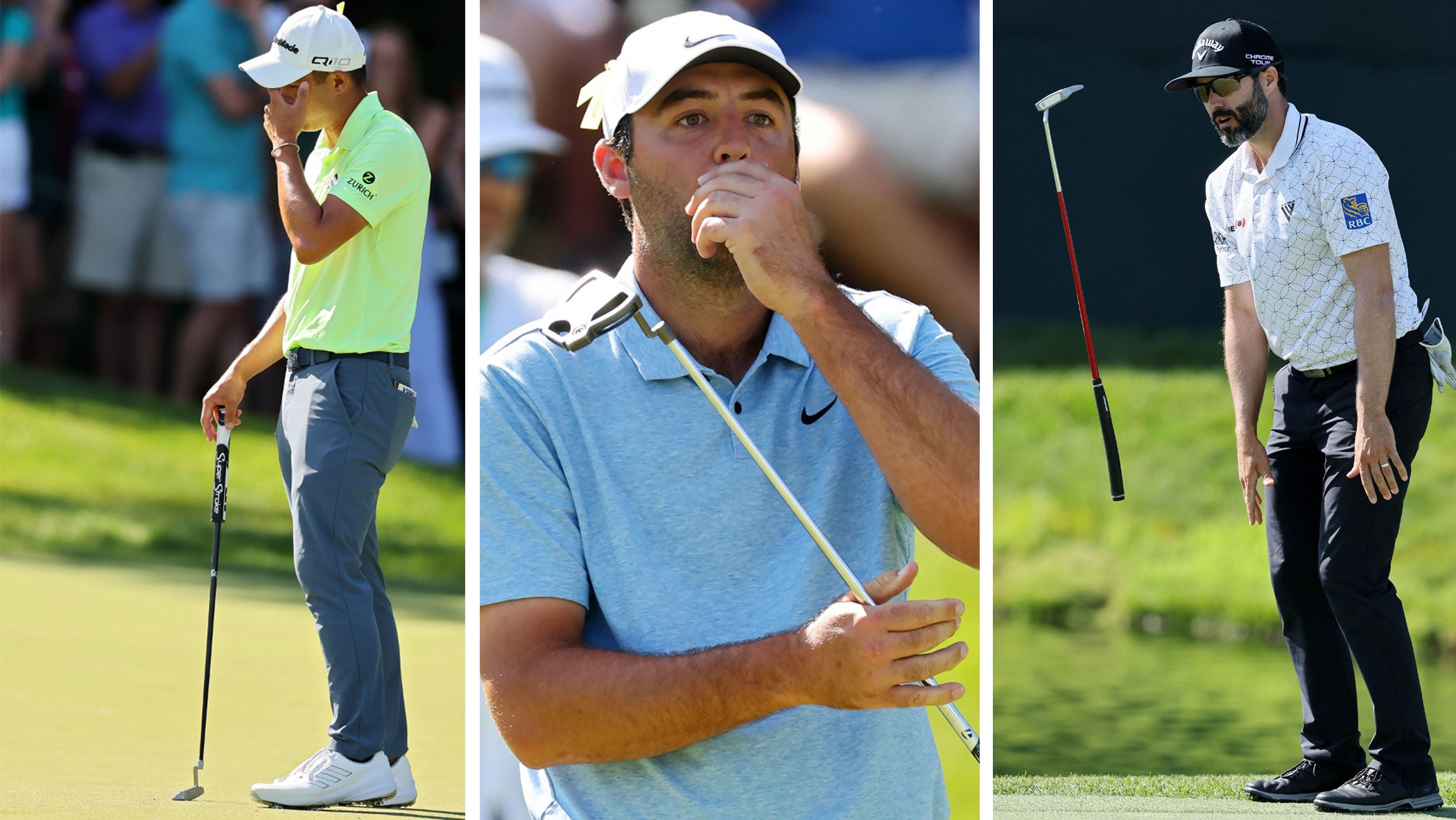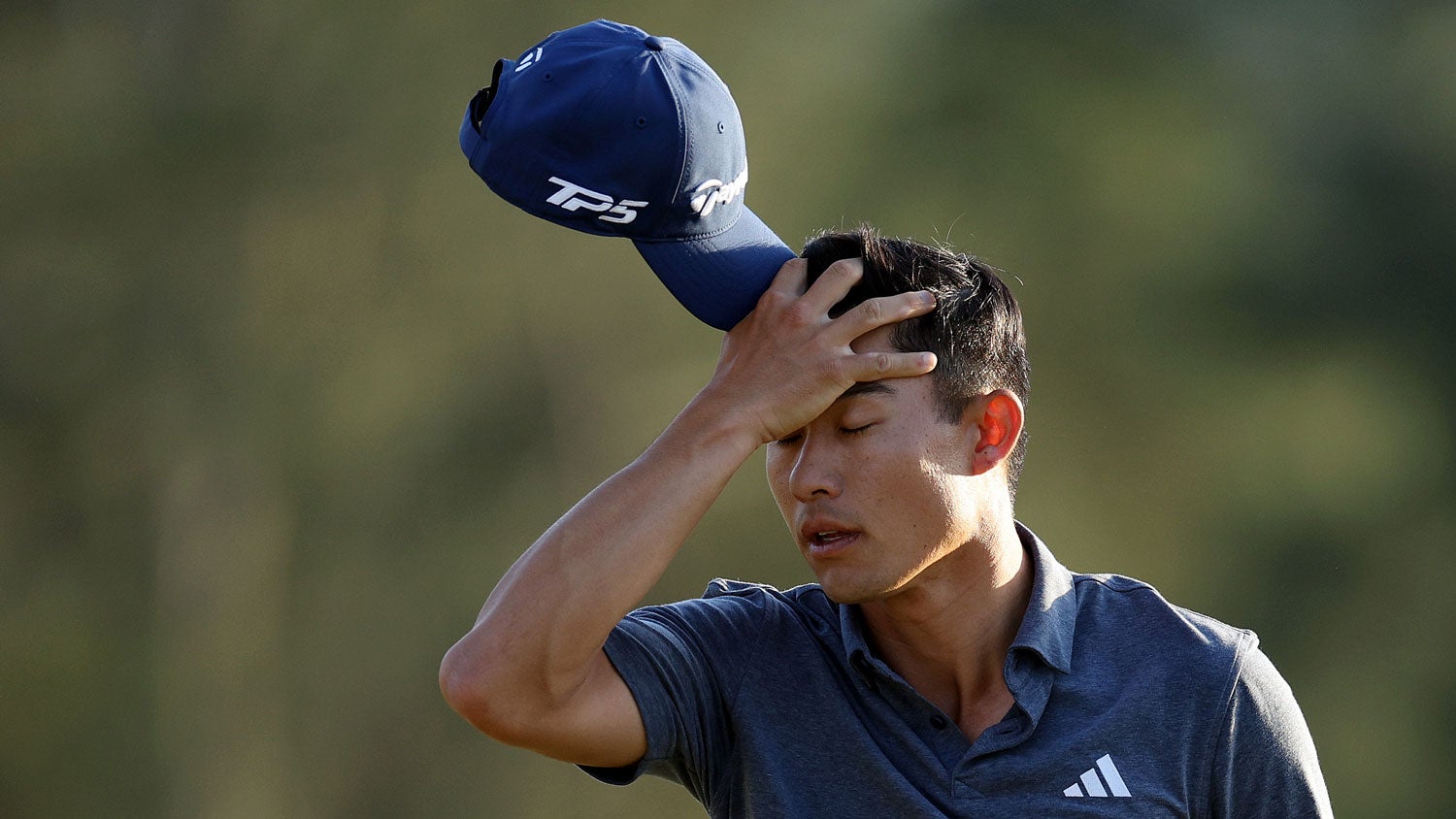Collin Morikawa has a 4-word solution for changing golf’s TV woes

Collin Morikawa says the solution to golf's TV woes starts with one simple fix.
Orlando Ramirez/Getty Images
While the golf world was laser-focused on the PGA Tour’s sport-changing deal with the Strategic Sports Group, one of its players had another deal on his mind.
The Tour’s TV deal.
On Tuesday night, hours before the PGA Tour announced a landmark agreement with a consortium of sports investors promising to invest some $3 billion in golf’s largest professional tour, Collin Morikawa became the latest player to add his voice to a growing chorus of players pondering the best way to improve golf’s TV product. The answer, Morikawa says, is simple math — four words in all: show more golf shots.
“Well, I mean, you first need to see more golf shots. Like that’s like — that’s like the No. 1 bullet point,” Morikawa said from the lectern at the AT&T Pebble Beach Pro-Am on Tuesday. “How do I make it more interesting? That’s a great one.”
Okay, we admit, the two-time major champ may be oversimplifying the complicated issue of golf television with that description. There are television rights deals to worry about, which cost a lot of money and, in turn, require a lot of advertising to fund. There are human issues of cameras and producers already being focused on too many things and working too many hours, to say nothing of golf-specific issues of 18 playing fields and up to 72 balls in play at a time. And then there are simple issues of speed and cadence, which can make a “normal”-feeling golf broadcast feel a bit like watching a film at eight-times speed if too many shots are jammed in.
But then again, perhaps he isn’t oversimplifying. Perhaps he’s just demanding golf think outside the box. A chief complaint of golf television over the last decade has been a dearth of players hitting golf shots — a problem borne as much of the very real concerns listed above as it is of the self-manufactured issues of CEO interviews and flowery self-promotional graphics, sponsorship activations and [shudders] Playing Throughs. The truth is that golf broadcasts could always be doing more, and that is a symptom of the fan disease that the PGA Tour’s players are suddenly beginning to self-diagnose: disinterest.
The crux of the issue is this: Golf’s tour wars have pitted the PGA Tour into an increasingly leveraged position, requiring the Tour to raise a ton of money to keep the Saudis from bleeding them dry. The problem with being leveraged is that, unlike the Saudis, the Tour does not presently have access to nearly $1 trillion worth of slush money — ethically questionable or otherwise — which means it needs to resort to the typical laws of economics to come up with some extra cash. An influx of private equity money, like the SSG agreement that came down on Wednesday, can help solve the issue in the short term, but in the long term the PGA Tour needs to make more money if it is going to continue to exist. And how does a professional sports league make more money?
That’s right: broadcasts.
These circumstances have brought us to Pebble Beach, where the best players in the world are gathered for the first full-field Signature Event of the 2024 season, the AT&T Pebble Beach Pro-Am. This high-money, star-studded event series was created for the reason of juicing fan interest, too, and thus far has done so successfully. The Siggies are proof that PGA Tour golf can be made better and more profitable in a relatively short period of time, which has led to some natural second-order thinking about how the rest of the PGA Tour’s product can follow suit. The TV rights deals, which account for roughly half of the Tour’s annual revenue and are one of the Tour’s few viable paths to legitimate exponential growth, have been the first thing on people’s minds.
“Look, golf’s not going to be as high speed, you know, body contact, people tackling. Like that’s just [not] golf, right?” Morikawa said. “But I think most fans understand that, and I’m not going to go dance down the fairway or celebrate differently on a birdie putt on the sixth hole on Friday.”
Of course, no conversation about the economic future of professional sports is complete without an adjacent conversation on the future of sports television, which is currently in the midst of what nearly all TV executives agree will one day be called “the good old days.” Today, the sports TV rights business is so lucrative that even a fringe sports league like the WWE performing on a streaming-only platform like Netflix can swing $5 billion over a 10-year period, and so vigorously competitive that one set of negotiations recently became the subject of an FBI bribery investigation. The NFL, sports television’s monolith, will make more than $111 billion in TV rights deals over the 11 years between 2021-2032 — enough money that it won’t need to sell a single ticket to be profitable.
The PGA Tour, with its more than $700 million in annual rights fees, is no slouch. But the commercialization of its product has affected television viewers in a way that other sports’ efforts at profitability have not. Fans are routinely enraged by the onslaught of interruptions to coverage, by the editorial decisions that lead to those interruptions, and by the failures of the networks and governing bodies to address either of the aforementioned issues. These squabbles most often take place on Twitter but every so often carry over into the real world, including in the case of the 2022 U.S. Open, when the USGA altered its commercial strategy overnight in order to limit interruptions for championship Sunday.
The broadcasts are keenly aware of the complaints, and in the last 12 months have offered glimmers of hope. For the first time in memory, players are taking the issue of golf television seriously. Their efforts began last January, when Max Homa and CBS debuted the walk-and-talk sessions that would become a staple of Tour coverage. They’ve intensified in recent months as discussions about the future of the PGA Tour’s business model have taken on heightened importance.
Morikawa is only the latest player to voice his opinions on this stuff, and he’s sure not to be the last. From Monterey Peninsula on Tuesday, he seemed to acknowledge that changing the fortunes of golf’s financial future will require a different level of buy-in from all interested parties — players included — even if it requires some discomfort for all involved.
“[The walk-and-talks] are great but like, I’m not going to do one every day,” he said. “I’m not going to do one every week. It’s up to the announcers to ask different questions every single week. I know people want to hear the insights of what we do and what we talk about on a shot in the middle of the fairway or if we’re in the rough, but it’s not easy every time, you know? If I had someone to watch over what I said every single second and they were to review it and be OK and I trusted that person, then fine. But a lot is said within five hours that is between me and my caddie that’s not meant for anyone else.”
It will be a while before Morikawa is of a changed mind about a dramatic shift in Tour telecasts, and in all likelihood much longer before the rest of the PGA Tour world follows suit. The good news is that with each press conference like Morikawa’s on Tuesday, that day is getting closer. The hard news is that change will happen just like Morikawa said: one golf shot at a time.
“You can’t change what golf is. You can’t change the aspect of we’ve got 18 holes, you’ve got players to start on Thursday, you’re going to have two waves, all this stuff, you can’t change that, right?” he said. “But you can change the fact of seeing more golf shots, and that’s a big part of actually saying, ‘I want to go watch golf.'”
The author welcomes your thoughts at james.colgan@golf.com — and encourages you to sign up for the Hot Mic newsletter below.














